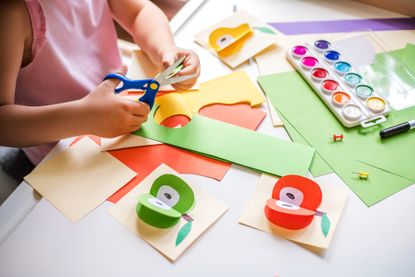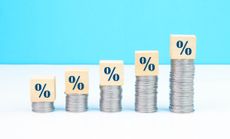Tax-free childcare allowance: how get up to £2,000 towards childcare costs
The tax-free childcare allowance can help manage extortionate childcare costs - make sure you’re not missing out on extra help


Around 800,000 families are potentially missing out on up to £2,000 (and £4,000 if you have a disabled child) of help towards childcare costs by not making use of the tax-free childcare allowance.
With energy, food and fuel prices crippling households budgets, any financial help to minimise the sting of extortionate childcare is welcome - but you do need to apply for it.
The scheme, which was launched in 2017, essentially means the government pays 20% of your childcare bills for up to £2,000 by paying you back the basic rate of income tax you’ve paid on money you use to pay for childcare. So, for every £8 you pay in, you get a £2 boost from the government.
Here’s everything you need to know about the tax-free childcare allowance.
WHO CAN GET THE TAX-FREE CHILDCARE ALLOWANCE?
The tax-free childcare allowance is available to working parents of children aged 11 and under (or 17 and under if you have a disabled child). To be eligible, you must also:
- Be working - and if you have a partner, you both need to be working to qualify
- You and your partner must each earn at least £152 a week, but less than £100,000 a year each.
If you are not working, you may still be eligible if you are:
- on sick leave
- on annual leave
- on shared parental, maternity, paternity or adoption leave
- You or your partner work, but the other can’t work and receives certain benefits including incapacity benefit, carer’s allowance or the severe disability allowance.
- You can’t get Tax Free Childcare and Tax Credits, Universal Credit or childcare vouchers at the same time. More on childcare vouchers below.
The cost of living has prompted more families to apply for the tax-free childcare allowance - around 384,000 families used the childcare scheme in March 2022, according to HMRC. That’s the highest level since the scheme was launched in 2017.
Look After My Bills Newsletter
Get the best money-saving tips, tricks and deals sent straight to your inbox every week. Make sense of your money in partnership with The Money Edit.
However, the scheme is not particularly well advertised by the government, meaning over 800,000 families who are eligible are missing out. That amounts to almost £3bn of free money that isn’t being used.
As well as not knowing about it, there are also some common misconceptions that it’s only available for pre-school children or that it is part of the 30 hours free childcare allowance, which is not the same.
How can the tax-free childcare be used?
The tax-free childcare allowance can be used to pay for a wide range of different types of childcare. These include:
- Nursery
- Childminders
- Nannies
- Au pairs
- Playgroups
- Breakfast and after school clubs
- Holiday camps
- Holiday clubs such as football club
You can only use the tax-free childcare allowance to pay a provider that is registered with the Tax-Free Childcare scheme and Ofsted, the Early Years Register or the Childcare Register.
How is the tax-free childcare allowance paid?
It isn’t cash in hand - instead, the money is paid into a digital account that you create via the Government Gateway platform; this takes a few minutes to create if you don't already have an account.
You’ll need your national insurance number to set up your account and, if you are self-employed, have your unique taxpayer reference at hand.
You then pay into that account via bank transfer, although setting up a standing order is quicker; the government top-up should be added to your account within 24 hours of you making a deposit.
The money can then be used to pay the approved childcare provider using your tax-free childcare account.
The tax-free childcare scheme adds £2 to every £8 you pay into your childcare account. The government will contribute up to £2,000 to your childcare account per year per child (or £4,000 if your child is disabled).
Be aware that you must reconfirm your eligibility for the tax-free childcare account every three months or your accounts will be closed. You’ll get an email reminder when it is due, and it only takes a couple of minutes.
How much should I pay into my tax-free childcare account?
It’s up to you how much you pay into your account each month, but work out how much your childcare costs on average per month and then set up a standing order to pay in a regular amount. So, if it’s £100 a month, you could put in at least £80 (with £20 coming from the government).
Keep in mind that the government places a quarterly cap on the top-up of £500 per child, so you should pay into your account all year round - even if you don’t need to pay for any childcare one month - that way you will spread your bills and can avoid the £500 three-monthly limit.
Can I use childcare vouchers and tax-free childcare?
The tax free childcare system was introduced in April 2018 to replace childcare vouchers, which closed to new applicants in April 2018. If you are still on the childcare voucher scheme via your employers, then you can’t also use the tax-free childcare scheme.
According to employee benefit firm Wider Plan, around 60% of parents who are getting childcare vouchers will be better-off sticking with them. This is because:
- There is no minimum earnings to qualify for childcare vouchers
- There is also no maximum income limit for childcare vouchers
- Only one parent has to be working work to qualify for childcare vouchers
- You can use it to pay for children up to age 15, rather than 11.
However it is limited to payment per parent and not per child, so larger families may not benefit.
The maximum you can receive through childcare vouchers is lower than with the tax-free scheme, so if your childcare costs are high vouchers may not be the best option. With childcare vouchers you can sacrifice up to £243 of your salary each month in return for ‘vouchers’. This works out as a maximum annual saving of £933 per parent for a basic-rate taxpayer. With up to £2,000 a year available under the tax-free childcare scheme it could be the better choice if you have lots of kids and high childcare costs.
Work out which scheme leaves you better off with the government’s tax-free childcare calculator.
Self-employed parents don’t qualify for childcare vouchers so tax-free childcare is the only choice.

Ruth is a personal finance journalist with 17 years’ experience writing about everything from pensions to pet insurance. Ruth started her career as a staff writer for MoneyWeek and she continues to edit their personal finance section. Ruth also writes for numerous national publications including The Sunday Times, The Times, The Mail on Sunday and Good Housekeeping. Ruth is passionate about ethical investing and encouraging people to take control of their finances and not be put off by jargon.
-
 Three energy firms pay £8m in switching compensation - has your provider paid out?
Three energy firms pay £8m in switching compensation - has your provider paid out?More than 100,000 customers have received compensation after changing providers, but is now a good time to switch energy suppliers?
By Tom Higgins Published
-
 Save £300 on your supermarket shop with cashback accounts
Save £300 on your supermarket shop with cashback accountsBanks, credit card companies and cashback sites are all offering cashback on your supermarket shop, but can you use them all to max out your savings?
By Vaishali Varu Published
-
 Save on petrol: how to save 5p off a litre of fuel at Morrisons
Save on petrol: how to save 5p off a litre of fuel at MorrisonsPetrol prices may have been falling since last summer but every penny counts at the pump. Here’s how to save 5p a litre at Morrisons for a limited time
By Sue Hayward Published
-
 Morrisons relaunches discount scheme with cheaper prices for loyal shoppers
Morrisons relaunches discount scheme with cheaper prices for loyal shoppersMorrisons is the latest supermarket to revamp prices and offers for its loyalty scheme members
By John Fitzsimons Published
-
 Coronation freebies and discounts: what’s up for grabs
Coronation freebies and discounts: what’s up for grabsFrom free railcards and holiday giveaways to discounts off food, we highlight the special offers launched to mark the coronation of King Charles III
By Ruth Emery Last updated
-
 8 ways to get interest-free money if you’re struggling
8 ways to get interest-free money if you’re strugglingHere are 8 clever ways to get interest-free income if you’re struggling with the rising cost of living
By Vaishali Varu Last updated
-
 Best birthday freebies and discounts
Best birthday freebies and discountsEnjoy your special day with these birthday discounts and freebies - we highlight 22 of the best offers
By Vaishali Varu Published
-
 Festival ticket scam warnings – how to protect yourself
Festival ticket scam warnings – how to protect yourselfConcert ticket scams have rocketed by more than 500% over the past year, while festival fraud has more than doubled. Here’s how to keep yourself safe ahead of the festival season.
By Tom Higgins Published
-
 Co-op Member Prices: Supermarket unveils discount scheme for loyal shoppers
Co-op Member Prices: Supermarket unveils discount scheme for loyal shoppersNew Co-op scheme means reduced prices for shoppers who join the co-operative. How much does it cost to join, and how does it compare to similar schemes run by Sainsbury’s and Tesco?
By John Fitzsimons Published
-
 Emergency alert test: what to expect and how to avoid being scammed
Emergency alert test: what to expect and how to avoid being scammedWe tell you everything you need to know about the UK’s first emergency alert test, which takes place this Sunday
By Vaishali Varu Published